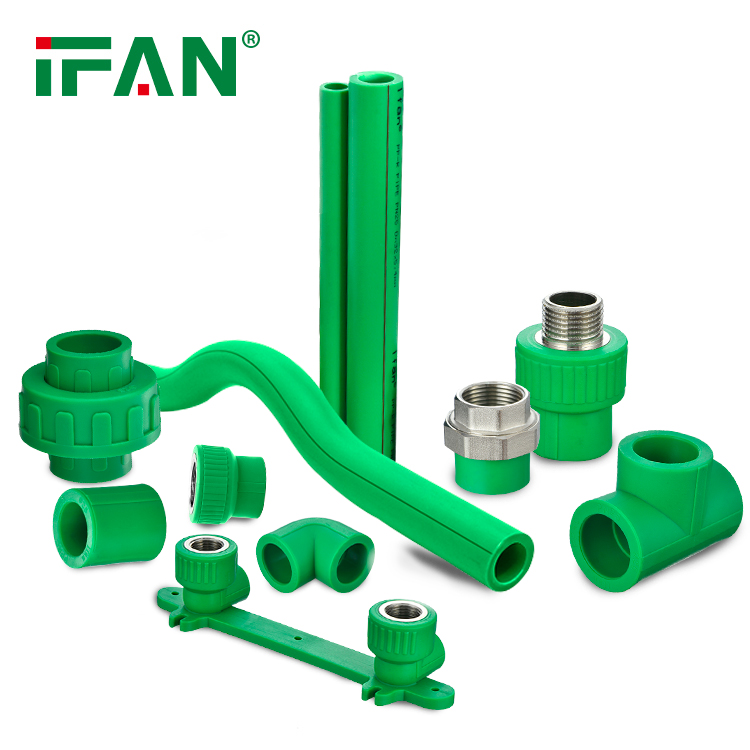Finding the Best PPR Pipes for Your Plumbing Needs
When it comes to plumbing, having the right materials is crucial for ensuring your system functions properly and lasts a long time. One of the most common pipes used in modern plumbing is the PPR pipe. PPR stands for Polypropylene Random Copolymer, a tough plastic material widely used for water supply lines and other applications.
But not all PPR pipe is created equal. There are a few key factors to consider when selecting the best PPR pipe for your specific needs. In this article, we’ll explore the advantages of PPR, the different types and sizes available, and provide tips for choosing the right PPR pipe for your next plumbing project.
IFAN factory with 30+ years of manufacturing experience supports color/size customization and free samples. Welcome to consult for catalog and free samples. This is our Facebook Website: www.facebook.com.

PPR Pipe Types and Grades
There are a few standard types and grades of PPR pipe defined by manufacturing standards:
- PPR 80 and PPR 100 – The numbers refer to the long-term heat resistance of the material, either 80°C or 100°C. PPR 100 is more durable for hot water lines.
- PN Rating – The pressure nominal (PN) rating is the metric measurement of working pressure capabilities (in bars). Common PN ratings are PN 10, PN 16, and PN 20.
- CTS vs. CPVC – Some PPR is manufactured as Copper Tube Size (CTS), matching copper pipe external diameters. CPVC is Iron Pipe Size and compatible with PVC fittings.
- Post-chlorinated – Post-chlorinated PPR undergoes an additional chlorination treatment and has superior rigidity and flavor/odor resistance.
Select the PPR type most suitable for your application based on temperature, pressure, pipe compatibility, and exposure to chemicals. Using the right grade ensures the pipe meets performance expectations.
How to Select the Optimal PPR Pipe
Choosing the best PPR pipe requires considering a few key factors:
- Application – Hot or cold water lines? High or low pressure? Potable water or chemical transport? Match a pipe grade that meets the temperature, pressure, and chemical needs.
- Pipe size – Size up or down based on the required flow rates and water pressure in the system design. Take friction loss into account.
- Project scale – Use larger diameter pipes and higher PN ratings for commercial and industrial applications.
- Fittings – Confirm the pipe will integrate with the required fittings and valves for the system.
- Coils or straight lengths – Coiled PPR provides more flexibility, while straight lengths are best for longer exposed runs.
- Standards approval – Opt for PPR pipe that meets approval standards like NSF 14 and 61 for potable water delivery.
Consulting with a qualified plumbing professional is the best way to ensure you select the optimal PPR pipe specifications for your unique project requirements.
Working With PPR Pipe – Installation Tips
Once you’ve sourced the right PPR pipe, proper installation is key to creating an effective system:
- Cutting – A PPR pipe cutter or fine-toothed saw easily cuts through PPR cleanly and squarely. De-burr cut ends.
- Connections – PPR fittings include elbows, tees, reducers, caps, and unions. Use manufacturer-approved lubricant and tools for secure leakage-free connections.
- Hangers – Use nonabrasive straps or hangers spaced every 1 to 1.5 meters to support horizontal runs.
- Thermal expansion – Allow room for expansion and contraction of longer PPR pipe runs with changes in temperature.
- Transition fittings – Use adapters when transitioning to other pipe materials like metal or PVC.
With some basic precautions, PPR pipe installation is generally quick and uncomplicated. Proper fusion of fittings ensures the pipeworks are safe for decades.
- EPP Compounds – Reliable European brand producing PPR 80 and 100 plus post-chlorinated PPR.
- Vesbo – Turkish company making PPR 80 in a range of pressure ratings.
- Pipelife – Austrian company specializing in PPR 80 and PPR 100 water pipes.
- Sekisui – Japanese company manufacturing PPR80 compliant with NSF 14 and 61 standards.
- Dow – Multinational chemical company producing quality /PPR resin for pipe production.
Conclusion
With its extreme temperature resistance, leak-free connections, and corrosion-proof properties, PPR has become a top choice for reliable water delivery piping. Choosing the right size and grade PPR pipe along with proper installation enables the pipe to provide decades of trouble-free performance. Do your research to select a compliant PPR pipe that matches your plumbing application and needs. Follow manufacturer recommendations and industry best practices to ensure a long-lasting, high-performing PPR pipe plumbing system.
IFAN
IFAN factory started in 1993. And IFAN has a workshop of 120000 square meters with 610 staff. IFAN can design and produce all plumbing pipe and fitting including PPR, PVC, CPVC PPSU HDPE PEXA PEXB PERT pipe and fitting, brass fitting, brass ball valve, heating system, gas system, sanitary faucets, and hose, In the past 30 years, IFAN has never forgotten his mission-To protect health and safety. The IFAN factory uses the best materials to produce high-quality pipe and fittings with an automatic production line and high-tech quality control machines.

